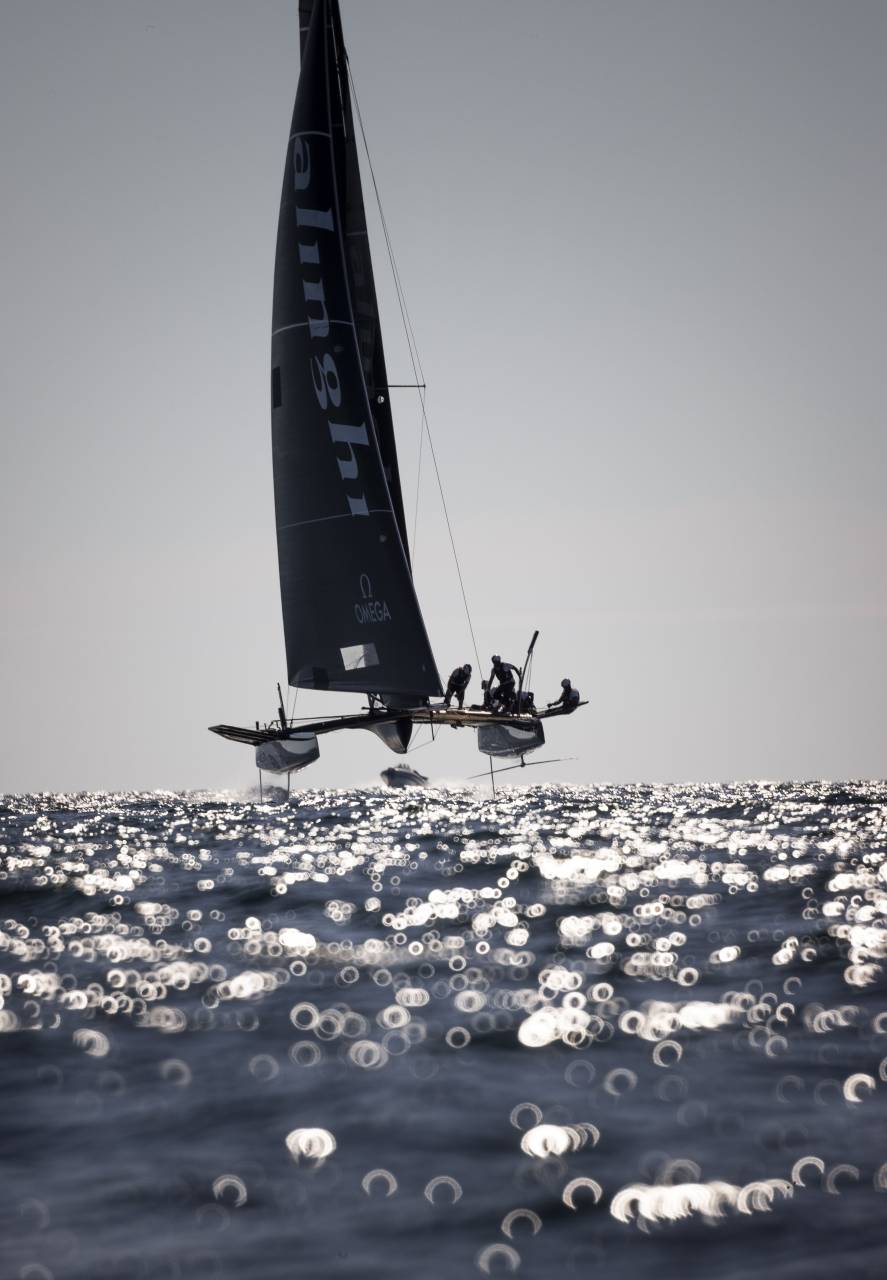Over the last few months, our engineers have gone a step further in developing this system, with the aim of maintaining a steady flight without any loss of speed during manoeuvres, and a linear performance in the event of a sensor failure.
In spring 2024, an update was carried out on the Exocet Gold fitted to the TF35. Initial tests have been promising. The improvements have lightened the mental load on the crews, who can now concentrate more on tactics and fine-tuning.
"We worked over the winter on updating the flight system. The first tests this spring have shown an improvement in stability and a good behaviour of the boat at all points of sail, even in rough conditions, which was the objective." Bertrand Favre, Class Director.
TWO MAJOR CHANGES TO THE SYSTEM.
Our team has been working on two areas of improvement: the flap action, which is more responsive and clearer in full flight, and the measurement of boat height.
"This is essential, because if the height estimate is wrong, the control algorithm can't do anything". Anatole, specialist flight control system engineer at Pixel sur Mer.
Our algorithm has become more efficient and its calculation capacity has increased significantly. This evolution means that we can now incorporate new elements, in particular a new relay sensor to enable the system to function even if the first sensor is lost. This gives us greater reliability in data collection, with height calculations varying by only around 5 centimeters.
All the images from the latest regattas show optimised flight quality, with the first tests in spring 2024 being very conclusive:
- Greater stability
- Optimised behaviour at all points of sail
- Smooth, even dynamics for manoeuvres (gybes and tacking)
POSITIVE FEEDBACK AND A TIGHTENING COMPETITION FOR THE TEAMS.
Initial feedback on this update has been very positive, opening up new navigation possibilities for the TF35 fleet:
"We're focusing above all on the quality of our sailing and our group. The competition is going to be tough with the new software smoothing out the performance of the boats, making the competition even tighter. We'll have to be creative to stay ahead." Jérôme Clerc, Realteam
"This Grand Prix was very interesting, we saw that all the boats were very close and that the new flight system was quite spectacular."Duncan Späth, skipper/helmsman of Sails of Change 10.
"It's no longer a balancing act to keep the boat in the air, as the flight control system forgives mistakes" adds Anatole, engineer at Pixel sur Mer.
This flight controller opens the way to much more extreme sailing conditions. Indeed, the main aim of the TF35 is to have a system that can fly well and explore more complex wind conditions. "In fact, the teams are starting to venture into regattas in excess of 20 knots. During the trials, this allowed the boat to reach speeds of 36 knots !" explains Anatole.
The TF35 season is underway. We're eagerly awaiting feedback from the teams so that we can continue to improve our solutions and bring these technologies to other boats!
Read more on our website "PIXEL SUR MER, THE REFERENCE IN FLIGHT CONTROL FOR FOILBOATS".
______________________
TO FIND OUT MORE:
Our previous articles on the subject:
Hydrofoil ships and low-carbon transport: https://www.pixelsurmer.com/fr/actualites/pixel-sur-mer-la-reference-en-controle-de-vol-pour-navires-a-foils
- 100% Pixel sur Mer flight controller on board the TF35: https://www.pixelsurmer.com/fr/actualites/un-controleur-de-vol-100-pixel-a-bord-des-tf35
Testimonial sources TF35:
https://tf35.org/fr/news/six-stop-tour-of-lake-geneva-announced-for-tf35-trophy
https://tf35.org/fr/news/tf35-2024-new-team-and-fresh-influx-of-crew
https://tf35.org/fr/news/final-day-shakeup-sees-sails-of-change-8-win-in-nyon
